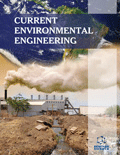Abstract
Greece is a Mediterranean country where the problem of devastating wildfire occurrence is great, threatening human lives and property. In the current research, an attempt is being made to evaluate the effects of simulated silvicultural treatments in order to efficiently reduce wildfire’s’ potential severity. The evaluation is based on the establishment of 52 experimental plots of 500 m2 and the estimation of the dendrometric characteristics (diameter at breast height, basal area, total height, crown length, canopy cover, understorey composition). The total sample was composed of n=1488 Pinus halepensis individuals, while the topographic parameter of slope steepness was estimated for each plot. Based on the NEXUS wildfire simulator software, critical fire hazard indicators such as the Torching and Crowning Indices were estimated before and after the virtual establishment of silvicultural treatments. The analysis showed that combinations of simple silvicultural interventions decreased the wildfire severity in all cases. The frontal fireline intensity was reduced by more than 70%, while the flame length was reduced to 59.1% and the spread rate to 20.6%. Despite the efficiency of the silvicultural treatments, under hazardous climatic conditions fire severity remained high for firefighting operations.
Keywords: Crowning index, Greece, NEXUS, pine woodlands, torching index, wildfire behavior.
 19
19

